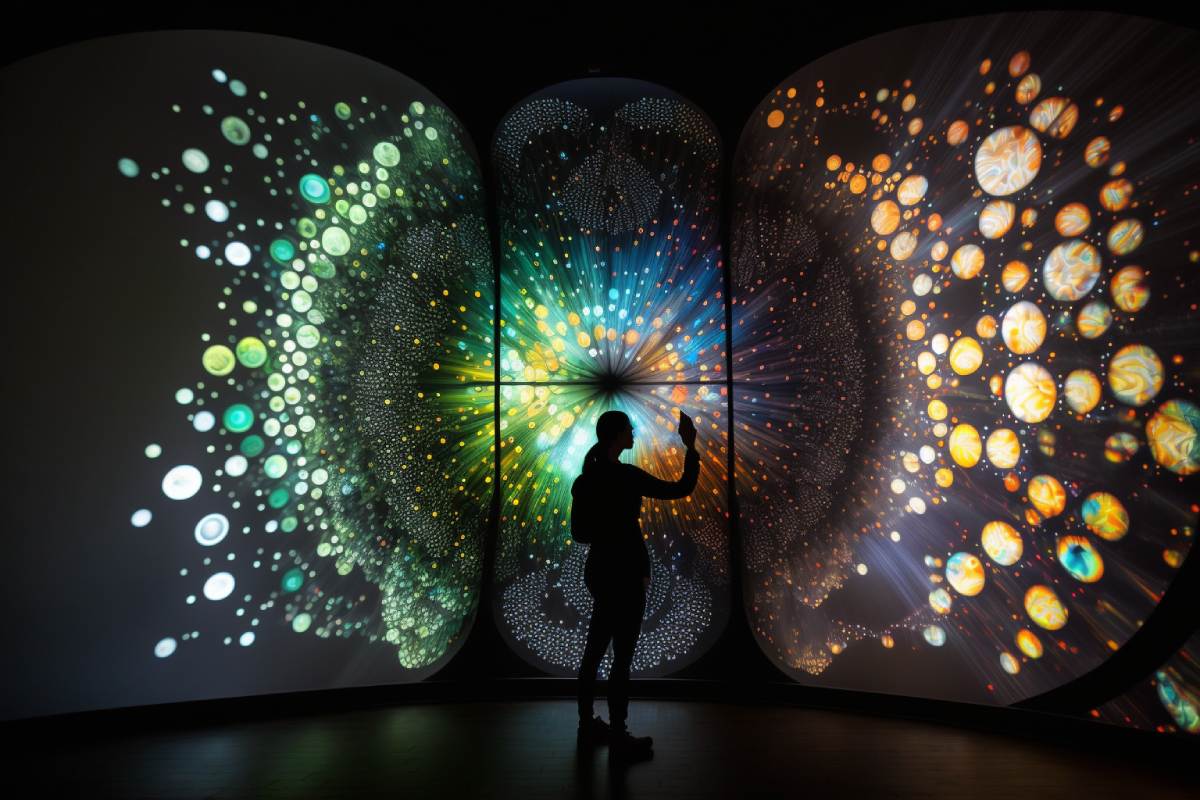The human brain possesses an innate ability to establish meaningful connections between visual objects, facilitating swift and effortless comprehension. In light of this, data visualization emerges as a potent tool for expeditious and effective learning. Research shows that data visualization often provides superior learning outcomes when compared with traditional text-based or verbal approaches.
By transforming textual data into visually stimulating resources, data visualization streamlines the learning process, empowering learners with a deeper understanding of complex concepts.
With the potential to revolutionize the realms of comprehension, learning, and assessment in online learning, data visualization warrants attention. In this regard, we shall explore several compelling case studies and research findings that substantiate this claim with empirical evidence.
14 Case Studies, Examples and Statistics about Data Visualization in Education
1. Student retained 65% of visual information, compared with 10-20% of written or spoken information
A study found that a student was able to retain 80% of the visual information after 3 hours and 65% after 3 days but was only able to remember 25-72% of the verbal or written information after 3 hours and 10-20% after 3 days.
2. Illustrated text is 83% more effective than text alone
A complimentary study to the one above found that illustrated texts are 9% more effective when tested for immediate comprehension and 83% more effective when the tests were conducted after a delay.
3. Visuals improve learning by up to 400% against text-based elearning
A 2014 study on the impact of visualization found that visualization has a much greater impact on a learner’s understanding compared to pure text content. It helps to understand complex patterns, improve comprehension, and learning by up to 400%.

3D Data Visualization
4. Our brain transmits 90% of the information in visual form
According to MIT, our brain can view images lasting less than 13 milliseconds, our eyes register more than 36,000 visual messages per hour, and 90% of the information our brain transmits is in the form of visuals.
5. Our brain can process visual information 60,000x times faster
Findings of a study by the University of Minnesota state that the human brain is capable of processing visual information 60,000x times faster than text.
6. 70% of teachers use video during lessons multiple times per week
A 2018 Boclips survey of teachers across the globe revealed that 70% of the teachers were using video in classroom sessions multiple times during the week.
7. 93% of institutions indicate that video use increases student satisfaction levels
The Annual State of Video in Education Report 2016 conducted a survey on 1,500 respondents from across the globe.
The survey revealed that 93% of the institutions showed that video tools have a positive impact on student learning and satisfaction, and 88% felt it led to increased achievement levels for students.
8. Visual aids are 43% more effective at persuading audiences
A University of Minnesota study found that when presenters used visual aids, their presentation was 43% more effective to persuade audiences to take a desired course of action.
9. Visual language is more impactful for groups to reach consensus
A study found that when groups used visual language, they were able to reach a consensus 21% more often than groups that did not use visuals.
Other findings from this survey revealed that visual language produces 22% higher results in 13% less time.

Spatial 3D Data
10. 29% increase in believability quotient for scientific facts presented with graphs
A study conducted at Cornell University found that when a scientific claim was presented with numbers or in pure words 68% of the people believed it.
But when the claim was accompanied by a simple graph, the number rose to 97%.
11. Visuals aids assist in quick decision-making in e-learning
A Stanford study was conducted with 110 engineering students and they were asked to view design presentation slides.
64% of participants made an immediate decision following presentations that used an overview map as a data visualization tool. The essay and multiple choice responses were used to assess learning outcomes, and the visual presentation was found to be more effective in facilitating comprehension and learning. The study also found that the benefits of the assertion-evidence slides persisted over time.
12. Written plus visual information is 70% more memorable
The findings of a study revealed that written information, when combined with visual information and actions, was 70% more memorable than text-alone.
13. Visual language improves problem solving by 19%
By incorporating visual language tools such as maps, icons, and storyboards, managers can improve communication, resulting in faster responsiveness, shorter meetings, and increased ability to reach consensus. According to research, the use of visual language improves problem-solving effectiveness by 19%, produces 22% higher results in 13% less time, and increases the persuasiveness of presenters by 43%. In conclusion, the inclusion of visual language tools in change programs is essential in facilitating faster and more effective change implementation.
14. 16% increase of audience persuasion with visual tools
The Wharton School of Business conducted a study that found that when a verbal-only presentation was used to convince the audience only 50% were in favor. However, when the presentation was supplemented with visuals the numbers rose to 2/3rds.
What does data visualization hold for metaverse-based learning platforms?
Interactive educational tools and 3D metaverse learning platforms offer an opportunity for users to visually engage with data, which can lead to better decision-making.
The convergence of emerging technologies such as AI and XR has significantly increased the capability to generate visual tools like pictures and illustrations.
Platforms like Axon Park can harness these tools to facilitate learning, better comprehend and interact with data. Data visualization can also create equal learning opportunities for all students by improving their visual senses, ultimately enhancing the learning experience.



